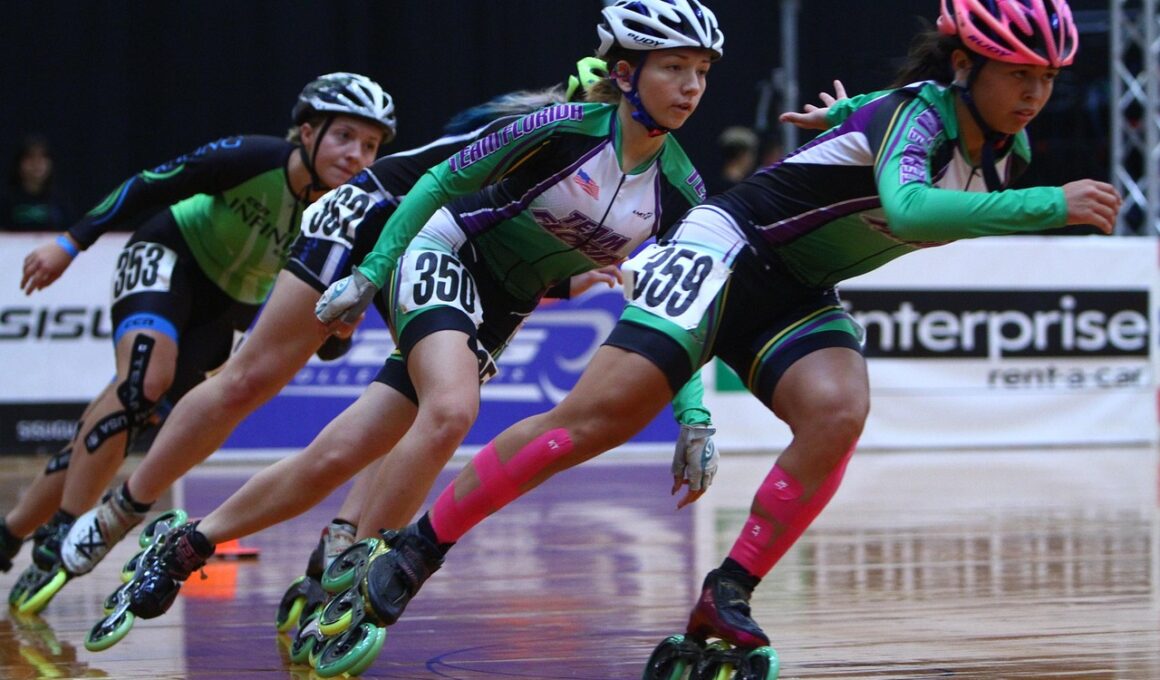The Importance of Inline Skate Frames
The frame of an inline skate plays a crucial role in its overall performance and responsiveness. Frames are primarily made from materials such as aluminum, plastic, or carbon fiber, each offering distinct advantages. A high-quality frame ensures stability and support, especially during aggressive skating techniques. The size and geometry of the frame can dramatically influence the skater’s balance and control. For instance, long frames can enhance speed and glide, while shorter frames may improve maneuverability and quick turns. Additionally, the mounting system of the frame affects how well it connects with the boot. Proper alignment is essential to ensure comfort and efficiency. Skaters often customize their frames depending on their skill level and preferred skating style, whether it’s recreational, aggressive, or speed skating. Lastly, maintenance is also vital for performance; regular checks on the frame for any signs of wear and tear can prevent accidents. Consequently, choosing the right frame is imperative for maximizing both performance and enjoyment during inline skating sessions.
Understanding Inline Skate Boots
The boot of an inline skate serves as the primary interface connecting the skater’s foot to the frame and wheels. A well-fitted boot not only enhances comfort but also optimizes control and responsiveness. Boots come in various styles, including soft boots, which offer higher comfort levels, and hard boots, which provide more support and power transfer. When selecting a boot, it’s essential to consider factors such as insulation, breathability, and paddings. Each of these elements contributes to the overall skate experience. Moreover, the closure systems, like laces or buckles, allow for better fit adjustments. Properly fitted boots reduce the risk of blisters and foot fatigue during extended skate sessions. Some skaters prefer to customize their boots with aftermarket insoles for added comfort and support. It’s also worthwhile to replace boots periodically, as wear can diminish their effectiveness, and ensure safety while skating. Proper boot selection and maintenance are directly linked to enhanced performance and can significantly impact a skater’s success on the rink.
How Frame Design Affects Performance
The design of the inline skate frame significantly impacts several performance aspects, including speed and agility. Skaters often notice that a frame’s length can influence their ability to transition from straight-line speed to quick turns. Longer frames tend to provide better stability at high speeds, while shorter frames excel in maneuverability. When choosing a frame, the height of the frame off the ground also matters, as lower frames typically allow for better balance. The material used impacts weight: lighter frames enable skaters to achieve higher speeds with less fatigue. A frame’s track width plays a role too; wider frames help in maintaining stability, particularly for beginners. However, these can hinder aggressive movements required in advanced skating. Skaters should also consider the angle of the frame; splayed or canted frames can improve efficiency when transitioning from straight-line skating to turns. Thus, understanding these design characteristics is essential for selecting a frame that matches one’s skating style and preferences, ensuring both performance and enjoyment on the ice or pavement.
Boot Comfort and Fit
Comfort and fit are paramount in inline skate boots as they directly influence the skating experience. A boot that fits well prevents injuries and optimizes performance by ensuring that energy transfer from the foot to the skate is seamless. Various boot types accommodate different foot shapes, catering to wide or narrow feet, helping minimize discomfort, and blisters. It’s recommended to try on multiple pairs, with attention to how snugly the boot hugs the foot yet provides room for toes to splay out. Some brands offer heat-moldable options which can perfectly conform to a skater’s unique foot shape after a warm fitting. The choice of socks also matters; specialized skate socks help wick moisture away and provide cushioning where it’s needed most. Additionally, skaters should consider the flex of the boot—softer boots for beginners allow for easier maneuverability, while stiffer, advanced options offer more control for experienced activities. Understanding personal foot shape and skating style assists skaters in picking the best boots for their needs, elevating comfort and performance.
Balancing Frame and Boot Flexibility
Balancing flexibility between the frame and boot is essential for achieving optimal performance in inline skating. Flexibility in the boot can aid in ankle movement, which is crucial in performing complex tricks and stunts. However, too much flexibility can compromise stability. This balance is particularly important for aggressive skating where quick movements are necessary. The frame, being stiffer, allows for strength and direct power transfer during such aggressive skating techniques. Finding a compromise that allows for adequate flex without excessive movement is vital. Many skaters opt for stiffer boots combined with medium flex frames. This combination typically results in better control and response. Additionally, the inherent material properties play crucial roles; carbon fiber frames offer superior stiffness while remaining lightweight. Some skaters experiment with combinations to find their ideal flex and support levels. Although personal preference heavily influences this choice, understanding the impact of flexibility helps in creating a skater’s unique style. Ultimately, it’s about discovering the right balance that ensures safety and performance during inline skating sessions.
Things to Consider for Regular Maintenance
Regular maintenance of both the frame and boot helps prolong the lifespan of inline skates and ensures consistently high performance. Checking the frame for any visible signs of wear or damage is critical; cracks and dents can affect performance and safety. It’s essential to maintain the wheels and bearings too as they contribute significantly to overall skating efficiency. Proper cleaning of wheels prevents dirt accumulation, which can lead to sluggish performance. Skaters should also be aware of and frequently adjust their brake systems as wear occurs, ensuring optimal stopping capabilities. The boot requires attention as well; drying wet boots thoroughly prevents mold and deformation, while cleaning them helps maintain breathability. Liners may need replacement every season depending on use. Additionally, investing in a skate bag allows for better storage and protection from elements when not in use. These maintenance habits contribute to a smoother, safer skating experience while also enhancing the longevity of your equipment, ensuring skaters can enjoy their sport without unexpected issues arising.
Choosing the Right Inline Skate Setup
When selecting the right inline skate setup, it’s vital to consider both frame and boot as compatible elements. Understanding individual skating style and the terrain is critical; recreational skaters may prioritize comfort, while aggressive skaters need control and durability. Matching the right frame length with the chosen boot size also contributes to enjoyment and effectiveness. Skaters should engage in research, reading product reviews focused on others’ experiences with various setups. Consulting professionals or experienced skaters at skate shops can provide valuable insights into appropriate choices. Additionally, testing different wake setups can offer personalized experiences. Occasional adjustments to the skate components based on growth, wear, and specific skating goals can enhance performance over time. If you are involved in competitive skating, being informed about the latest technology can also influence your decision. As well, many skaters enjoy upgrading parts over time rather than investing in new skates completely. This fosters a deeper understanding of individual preferences and technology, leading to a more enjoyable inline skating journey.
Conclusion: Maximizing Skate Performance
Understanding the pivotal roles of frame and boot in inline skate performance ultimately allows skaters to make informed choices for their setups. Each component directly influences how well a skater performs and enjoys their activity. A quality frame facilitates speed, while a well-fitted boot ensures comfort and control. Discovering the right balance of flexibility and rigidity between these components significantly impacts overall skating experience. Skaters should prioritize their maintenance, ensuring durability and optimal performance over the long term. Regularly considering personal skating style and environment is essential when it comes to enhancements. Whether one is a beginner or an experienced skater, knowing how these two elements work together will improve their skating journey and potential. Therefore, continuous exploration and research on ideal setups will yield the best results while promoting a vibrant, enjoyable inline skating experience. With newly gained knowledge and insights, inline skaters can engage in a fulfilling journey, mastering skills and enjoying every glide.


